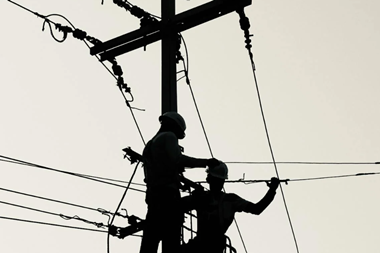Working alongside fund managers allows pension schemes to build up in-house infrastructure expertise, APG's Robbert Coomans tells Shayla Walmsley
There are two reasons for a pension fund to invest in infrastructure, according to Robbert Coomans, infrastructure adviser to the board of APG Investments, set up to manage the assets and administration of ABP, the €215bn Dutch public sector fund. "One is because returns are aligned to liabilities. The second is that, as a pension fund, the goal is to have a decent, low premium for future pensions, with an optimised return on the portfolio."
Initially, ABP opted for infrastructure within a diverse portfolio of asset classes because it meant the scheme could invest in projects and companies providing stable cash flows with an inflation component. APG has now committed €4.5bn to infrastructure and invested €2.5bn. Infrastructure makes up 2% of the overall portfolio.
"Typically, infrastructure is a long-term inflation hedge," says Coomans. What is less typical is the investment manager's approach to the direct versus indirect dilemma.
Rather than seeing investment in funds or direct investment in infrastructure assets as an either/or dichotomy, APG plans to use expertise built up watching fund managers eventually to switch to direct investment. "It's the logical way to build up a portfolio. If you invest in, say, two funds, each investing in 10-15 projects, you have a diversified portfolio and you spread the risk.
"It's a natural trend from investing in funds to investing in assets, and we could see it coming. If you look at Canadian pension funds, you can see that, as they built up their teams, they didn't need to keep investing in funds - they could invest directly," he says.
Learning curve
European pension funds lack the track record of major Canadian pension schemes such as the CA$48bn (€32bn) Ontario Municipal Employees Retirement System (OMERS), whose Borealis subsidiary has a staff of around 40 and €5.6bn in worldwide infrastructure assets. Not only do they lack the in-house specialist infrastructure of their own; they can rarely match the sheer size of their Canadian counterparts.
"The average European pension fund has a total of, say, €10bn, and only 5-10% of that to invest in infrastructure," says Coomans. "It can't afford to invest directly - it doesn't have four to five people it can release for three months to investigate assets. So it will do due diligence and invest in a fund instead. There is no way you can invest directly without expertise.
APG's dry-run approach exploits its own expertise in fund manager selection to build up operational savvy that lies well outside its existing skillset. Investing in funds means it can "find a capable manager with experience to invest on your behalf. You don't need a large team and specific in-house knowledge of infrastructure," says Coomans.
In contrast to the highly specialised knowledge needed for direct investment, he points out, there is "no real difference" between selecting a fund manager for infrastructure or for any other asset class.
"Whether you're looking for an infrastructure manager or a real estate manager, for instance, you're looking at proven capability and success in that asset class, organisation, administration, systems and the rest. There's nothing different except the specific knowledge."
Only for the few
Yet Coomans acknowledges that this quasi-mentoring relationship is unlikely to be an option for smaller investors without the influence of an APG-sized investor. When APG began investing in funds on behalf of its pension fund client, the fact that it was a relationship of equals - that APG was a foundation partner and co-investor - made all the difference.
"We made a judgement on the fund management but we wanted to control management fees and to be a major participant in the fund," he says. "As a founding partner you have a lot of say, but we also wanted to be in a position to co-invest - to invest directly in a project.
"Of course it makes a difference if you're a large pension fund - I can't deny that. If you're 20% of the fund, the manager will listen more carefully to you than if you're 2%."
What makes capacity-building in the asset class all the more necessary is APG's decision to invest across mature and emerging markets - including South America and Asia.
The emerging markets focus isn't risk-homogenous - APG also invests in Eastern European infrastructure - primarily because it's designed to spread geographic risk, rather than to give the infrastructure allocation a regional focus. "It's a long-
term, illiquid asset, and you should be able to rely on the political environment and the administrative system," says Coomans. "We focus on regulated or near-monopoly assets. With regulated assets, you have a predictable price.
With near-monopolies, you can be sure that, if you invest in a toll road, another one won't spring up next to it."Of course, focusing on near-monopolies does not immunise investors against political risk, nor from the increased focus of governments on investors' management capacity.
Having sold off assets to take advantage of upward pricing movements, public authorities have often shown themselves adept at increasing maintenance and management demands. "If you invest directly, you avoid the management fee but you need to have a large, knowledgeable team to go into due diligence over issues such as construction risk," says Coomans.
"You need to know a lot more about operational issues than you do to invest in a fund, including expectations for asset growth and maintenance costs." Moreover, regulatory risk is arguably greater in developed markets simply because these have more regulation.
APG's concern with the multiple risks associated with investing in infrastructure extends to both asset and sector-specific risks. "Because we had a good relationship with fund managers, we used it as a learning curve for due diligence, so we saw the pitfalls and learned what we needed to look at with assets," he says.
APG does not limit its fund investments to lower-risk pure infrastructure such as transport, utilities and communications; it also invests in social infrastructure such as schools and private finance initiatives (PFI) projects. But it has, to date, stayed clear of commodity-tied utilities with no fixed pricing. "We are not interested in electricity production because of the commodity risk. We're not seeking exposure to the commercial risk," he says.












